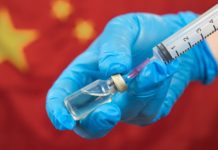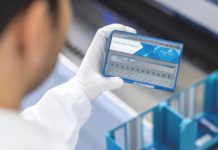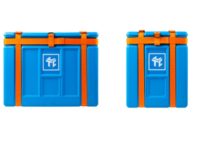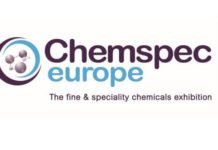Eli Lilly and Company announced today that the U.S. FDA has approved Taltz® injection 80 mg/mL for the treatment of moderate-to-severe plaque psoriasis in adult patients who are candidates for systemic therapy or phototherapy.
Taltz should not be used in patients with a previous hypersensitivity reaction, such as anaphylaxis, to ixekizumab or to any of the excipients. Taltz is designed to specifically target IL-17A, a protein that plays a role in driving underlying inflammation in psoriasis.Psoriasis is a chronic, immune disease that affects the skin. Psoriasis affects approximately 7.5 million Americans, approximately 20 percent of whom have moderate-to-severe plaque psoriasis.
3 Plaque psoriasis is the most common form of the condition and appears as raised, red patches of skin covered with a silvery, white buildup of dead skin cells, which are often painful or itchy.3,4 The exact cause of psoriasis is unknown, though genetics and environmental factors are known to play a role in the development of the disease.
“Many people living with psoriasis are still looking for a treatment that will successfully manage the magnitude of this disease,” said Alex Azar, president, Lilly USA, LLC. “With the approval of Taltz, we are proud to provide patients with a new treatment that may help patients experience virtually or completely clear skin.”
The FDA approval of Taltz was based on findings from the largest Phase 3 trial program approved to date—more than 3,800 patients with moderate-to-severe plaque psoriasis from 21 countries.5 This number includes patients who began the trial on Taltz or placebo, or active comparator (U.S.-approved etanercept).6 This clinical program included three double-blind, multicenter, Phase 3 studies—UNCOVER-1, UNCOVER-2 and UNCOVER-3—which demonstrated the safety and efficacy of Taltz in patients with moderate-to-severe plaque psoriasis. All three studies evaluated the safety and efficacy of Taltz (80 mg every two weeks, following a 160-mg starting dose) compared to placebo after 12 weeks. UNCOVER-2 and UNCOVER-3 included an additional comparator arm in which patients received U.S.-approved etanercept (50 mg twice a week) for 12 weeks. UNCOVER-1 and UNCOVER-2 also evaluated response rates with Taltz during the maintenance period through 60 weeks.
In these studies, the co-primary efficacy endpoints at 12 weeks were a 75 percent improvement in the composite Psoriasis Area Severity Index (PASI) score and static Physician’s Global Assessment (sPGA) 0 or 1 and at least a 2-point improvement from baseline. PASI measures the extent and severity of psoriasis by assessing average redness, thickness and scaliness of skin lesions (each graded on a zero to four scale), weighted by the body surface area of involved skin, while the sPGA is the physician’s assessment of severity of a patient’s psoriasis lesions overall at a specific point in time and is a required measure the FDA uses to evaluate effectiveness.6
In all three studies, at 12 weeks, 87 to 90 percent of patients treated with Taltz saw a significant improvement of their psoriasis plaques (PASI 75). In addition, 81 to 83 percent of patients treated with Taltz achieved sPGA 0 or 1. The majority of patients treated with Taltz, 68 to 71 percent, achieved virtually clear skin (PASI 90) and 35 to 42 percent of patients saw complete resolution of their psoriasis plaques (PASI 100, sPGA 0). Among those patients treated with placebo, 7 percent or fewer achieved PASI 75, 7 percent or fewer achieved sPGA 0 or 1, 3 percent or fewer achieved PASI 90 and 1 percent or fewer achieved PASI 100 and sPGA 0.
In UNCOVER-1 and UNCOVER-2, of patients who responded to Taltz (sPGA 0 or 1 and at least a 2-point improvement from baseline) at 12 weeks, 75 percent consistently maintained that response at the 60-week endpoint.
Taltz was also statistically superior to U.S.-approved etanercept at all skin clearance levels, including PASI 75 and sPGA 0 or 1 at 12 weeks. In an integrated analysis of the U.S. sites in the two active comparator studies—UNCOVER-2 and UNCOVER-3—the respective response rates for Taltz vs. U.S.-approved etanercept were 87 percent vs. 41 percent for PASI 75 and 73 percent vs. 27 percent for sPGA 0 or 1.
Information regarding the safety of Taltz is drawn from a database of 4,204 patients with moderate-to-severe plaque psoriasis who volunteered in both controlled and uncontrolled clinical trials.
Taltz may increase the risk of infection. Patients treated with Taltz had a higher rate of infections than patients treated with placebo (27 percent vs. 23 percent). Upper respiratory tract infections, oral candidiasis, conjunctivitis and tinea infections occurred more frequently in patients treated with Taltz compared to placebo. Serious infections have occurred. Instruct patients to seek medical advice if signs or symptoms of clinically important chronic or acute infection occur. If a serious infection develops, discontinue Taltz until the infection resolves.
Other warnings and precautions for Taltz include pre-treatment evaluation for tuberculosis, hypersensitivity reactions, inflammatory bowel disease and immunizations. See Important Safety Information below.
In UNCOVER-2 and UNCOVER-3, the rate of serious adverse events during the controlled induction period (weeks 0-12) was 0.7 percent for U.S.-approved etanercept and 2 percent for Taltz, and the rate of discontinuation from adverse events was 0.7 percent for U.S.-approved etanercept and 2 percent for Taltz. The incidence of infections was 18 percent for U.S.-approved etanercept and 26 percent for Taltz. The rate of serious infections was 0.3 percent for both U.S.-approved etanercept and Taltz.
“Complete clearance of skin plaques is an important treatment goal for psoriasis,” said Craig Leonardi, M.D., lead study author and clinical professor of dermatology at St. Louis University School of Medicine. “With Taltz, physicians now have a choice that can help patients achieve virtually clear or completely clear skin; in fact, four out of 10 achieved completely clear skin. With these study results, physicians can reassure patients that consistent results can be maintained with Taltz.”


























